Spiritual Travel
The spiritual allure of Ba Ria-Vung Tau
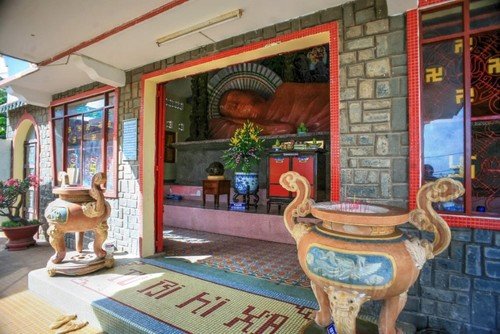
(VOVWORLD) – Ba Ria-Vung Tau (now part of Ho Chi Minh City) is famous, not only for its beaches and beautiful scenic spots, but as a land rich in cultural traditions, with many historical, religious, and spiritual sites. This has made spiritual tourism blending culture and belief increasingly popular here.
| The main hall of Nirvana Vihara (Photo: phatgiao.org.vn) |
Vung Tau is called “The land of Buddhism and the sea.” Atop Nui Lon (Big Mountain), the Thich Ca Phat Dai pagoda emerges like a shining pearl from the green forest, serene and majestic. The path to the pagoda winds up stone steps flanked by lush trees, with the subtle scent of incense in the air. The statue of Buddha Shakyamuni meditating beneath a Bodhi tree is a highlight, a place where both locals and visitors come to find a moment of tranquility.
Another notable spiritual site is Niet Ban Tinh Xa (Nirvana Vihara), located on the slope of Nui Nho (Small Mountain), considered one of the most beautiful pagodas in Vũng Tàu ward.
In the heart of Vung Tau lies Linh Son pagoda, also known as the Golden Buddha pagoda. It was ranked among Vietnam’s top 100 spiritual tourism destinations and has been recognized as a national historical and cultural relic site. The pagoda welcomes Buddhist followers year-round, but especially during the Lunar New Year.
“I often come to Linh Son pagoda in the New Year to pray for peace, prosperity, and success for my family,” said a local resident.
“At the beginning of the year, Buddhists visit the pagoda to pray for peace for their families and seek guidance toward good deeds and away from wrongdoing, in accordance with Buddha’s teachings,” said another local.
Ba Ria-Vung Tau is also home to many temples closely tied to folk beliefs and ancestral worship. Ngu Hanh temple in Long Hai commune represents the Mother Goddess worship of Southern Vietnam.
Every year, the whale worshipping festival and the festival to honor the Mother Goddess of the Land are celebrated, attracting thousands of fishermen and other visitors who come to pray for peace, good luck, bountiful fish harvests, and happiness.
Another destination is the Thang Tam communal house, where locals honor their predecessors. One of the region’s oldest relic sites, it has both historical and spiritual significance. Meanwhile, the Long Son Grand House is an architectural complex built in a style that blends folk beliefs with Confucianism and Taoism.
| The Long Son Grand House (Photo: Hoang Tuyet/baotintuc.vn/VNA) |
What makes Ba Ria-Vung Tau stand out in the national spiritual tourism landscape is its harmonious fusion of spiritual sites with breathtaking natural beauty. The 32-meter-tall Jesus Christ statue atop Nui Nho, draws thousands of visitors each year.
“The statue is magnificent, capturing the solemn majesty of Christ the King. Climbing up here is exhausting, but I was determined to make the journey,” said a pilgrim.
“This statue is an exceptional tourist destination in Vung Tau. I come here to see the city from a new perspective,” said a visitor.
| A panoramic view of Vung Tau (Photo: Nguyen Trang /ittpa.baria-vungtau.gov.vn) |
A trip to Con Dao, a beautiful and sacred island in Vung Tau, is like stepping back into the past. It’s a deeply spiritual place that reminds people of patriotism, national pride, and post-war recovery. Notable destinations include Hang Duong cemetery and the tomb of heroine Vo Thi Sau.
Spiritual tourism here is an opportunity for visitors to connect with the country’s history, its spirit, and one’s inner self.
Spiritual Travel
India Faith-Based Tourism Market Growth by 2032: Key Destinations Like Varanasi, Amritsar, Rishikesh, Ajmer, and Shirdi to Drive Future Expansion
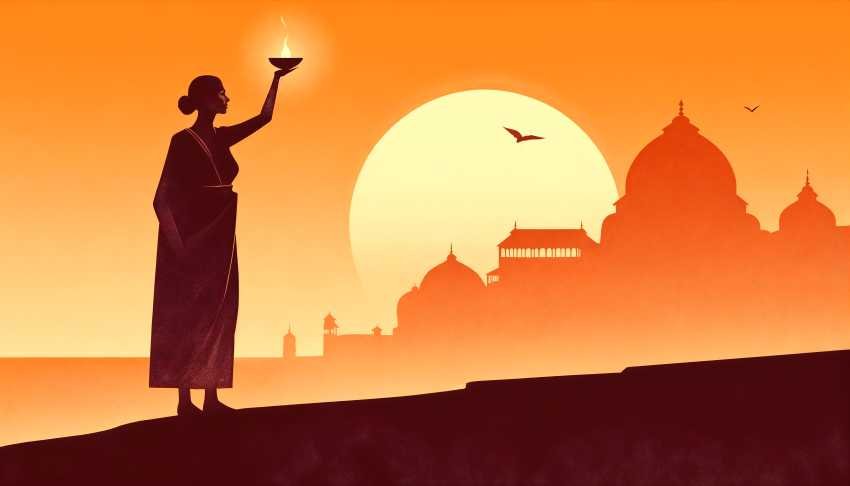
Saturday, August 2, 2025
The India faith-based tourism market is a dynamic and expanding sector within the broader tourism industry, drawing millions of devotees and travelers to the country’s sacred sites. These destinations, rich in cultural and spiritual heritage, have long been magnets for those seeking a deeper connection to their religious beliefs. In recent years, the sector has experienced significant transformation, driven by factors such as enhanced infrastructure, digital booking platforms, government initiatives, and evolving consumer preferences for experiential travel. As the market continues to grow, destinations like Varanasi, Amritsar, Rishikesh, Ajmer, and Shirdi are poised to play key roles in shaping the future of India’s faith-based tourism market by 2032.
Market Overview
India has long been a hub for spiritual and religious tourism, attracting pilgrims from around the world. With a population deeply rooted in various faith traditions, the country’s tourism market has witnessed a steady increase in the number of travelers visiting religious sites for both spiritual and cultural experiences. In 2025, the India Faith-Based Tourism market is estimated to be valued at USD 1,361.1 million, and it is expected to grow substantially, reaching USD 3,689.5 million by 2032. This represents a compound annual growth rate (CAGR) of 15.0% from 2025 to 2032, highlighting the sector’s rapid expansion.
As faith-based tourism becomes an increasingly significant contributor to India’s tourism economy, destinations that blend spirituality with cultural experiences are attracting not only domestic pilgrims but also international travelers. These sites are no longer just places of worship but have become destinations that offer holistic travel experiences, combining wellness, culture, and history.
Key Drivers of Growth in Faith-Based Tourism
The growth of India’s faith-based tourism market can be attributed to several key factors:
- Organized Pilgrimage Tours: A significant driver of this market’s growth is the increasing demand for structured pilgrimage tours. In 2024, over 45 million travelers participated in organized faith-based travel packages, reflecting a 20% year-on-year increase. This surge underscores the growing preference for curated spiritual experiences that offer convenience, comfort, and personalized itineraries. Pilgrims are seeking more organized, well-managed travel experiences that cater to their spiritual needs.
- Technological Advancements: The digitalization of the tourism sector has played a pivotal role in streamlining access to faith-based travel experiences. Online travel platforms, mobile applications, and payment solutions have simplified the booking process for both domestic and international tourists. The convenience of booking pilgrimage tours online has resulted in an 18% increase in average transaction value for faith tourism-related bookings in 2024. The accessibility of digital tools has not only improved user engagement but also expanded market reach.
- Infrastructure Improvements: Regional connectivity has significantly improved, especially in states with major pilgrimage sites like Uttarakhand and Tamil Nadu. Investments in dedicated airport and rail infrastructure have made travel to these religious sites more accessible, resulting in a 12% increase in pilgrimage footfalls in these regions. Enhanced transport connectivity ensures that devotees can reach their destinations more quickly and comfortably, fueling growth in faith-based tourism.
- Wellness and Cultural Integration: Another key trend influencing the growth of faith-based tourism is the integration of wellness and cultural experiences into pilgrimage itineraries. Increasingly, travelers are seeking experiences that blend spirituality with personal well-being. Studies indicate that in 2025, 30% of faith-based travelers are opting for packages that combine spiritual activities with wellness retreats. This trend is broadening the scope of faith tourism, allowing it to attract a more diverse group of travelers.
Emerging Faith-Based Destinations in India
While traditional pilgrimage routes like the Char Dham, Vaishno Devi, and Golden Temple in Amritsar continue to draw millions of pilgrims each year, several emerging destinations are expected to play an increasingly important role in the country’s faith-based tourism landscape by 2032. These destinations are capitalizing on their spiritual significance, improved infrastructure, and integrated tourism offerings.
1. Varanasi: The Spiritual Capital of India
Varanasi, one of the oldest cities in the world, remains a central destination for pilgrims and tourists alike. As a major Hindu pilgrimage center, Varanasi attracts millions of visitors each year. The city’s ghats, temples, and spiritual aura make it a must-visit for anyone seeking a deeper connection to Hinduism. The growing popularity of Varanasi as a faith-based tourism destination is further supported by its expanding infrastructure, including new flight routes and improved amenities for tourists. By 2032, Varanasi is expected to see a significant rise in visitor numbers, with more travelers seeking spiritual and cultural experiences.
2. Amritsar: A Center for Sikh Pilgrimage
Amritsar, home to the Golden Temple, is one of India’s most important pilgrimage destinations for Sikhs. The city’s cultural and religious significance, coupled with its vibrant history, makes it a prime destination for spiritual tourism. The growing number of international travelers, especially from the Sikh diaspora, is contributing to Amritsar’s rise as a major faith tourism hub. By 2032, the city is expected to see further growth in both domestic and international visitor numbers, particularly as tourism infrastructure continues to improve.
3. Rishikesh: The Yoga and Spiritual Hub
Rishikesh, known as the “Yoga Capital of the World,” has seen a surge in tourism, particularly from international travelers seeking spiritual experiences. Located on the banks of the Ganges River, Rishikesh is not only a major Hindu pilgrimage site but also a destination for wellness and yoga retreats. The combination of spirituality, wellness, and adventure tourism has made Rishikesh an attractive destination for modern-day pilgrims. Its popularity is expected to grow, with more travelers seeking to combine their spiritual journeys with health and wellness activities.
4. Ajmer: A Hub for Sufi Pilgrimage
Ajmer, home to the revered Sufi shrine of Khwaja Moinuddin Chishti, attracts millions of Muslim pilgrims each year. The city’s significance in the Sufi tradition makes it one of India’s most important pilgrimage centers for Muslims. The growing interest in Sufi culture and spirituality, combined with improved accessibility and infrastructure, is driving the growth of Ajmer as a faith tourism destination. The city’s religious and cultural offerings are expected to attract even more visitors by 2032.
5. Shirdi: The Seat of Sai Baba’s Legacy
Shirdi, the home of Sai Baba, continues to be a major pilgrimage destination for millions of devotees. The temple complex and the surrounding town have seen significant developments in infrastructure, making it easier for pilgrims to visit. The growing number of travelers, particularly from Maharashtra and neighboring states, is expected to drive growth in Shirdi’s faith-based tourism sector. With continued investment in facilities and services, Shirdi is set to become an even more prominent destination for religious tourism in the coming years.
Conclusion
India’s faith-based tourism market is poised for substantial growth by 2032, driven by factors such as organized pilgrimage tours, technological advancements, infrastructure development, and the integration of wellness and cultural experiences. As the sector expands, destinations like Varanasi, Amritsar, Rishikesh, Ajmer, and Shirdi will play crucial roles in attracting pilgrims and travelers seeking spiritual fulfillment. With a forecasted CAGR of 15.0%, the India faith-based tourism market is set to become a significant contributor to the country’s overall tourism economy, offering a wide range of opportunities for growth and development in the coming years.
Spiritual Travel
Tehran Hosts Martyrs of Power Memorial Rally: A Family-Focused Spiritual Tour
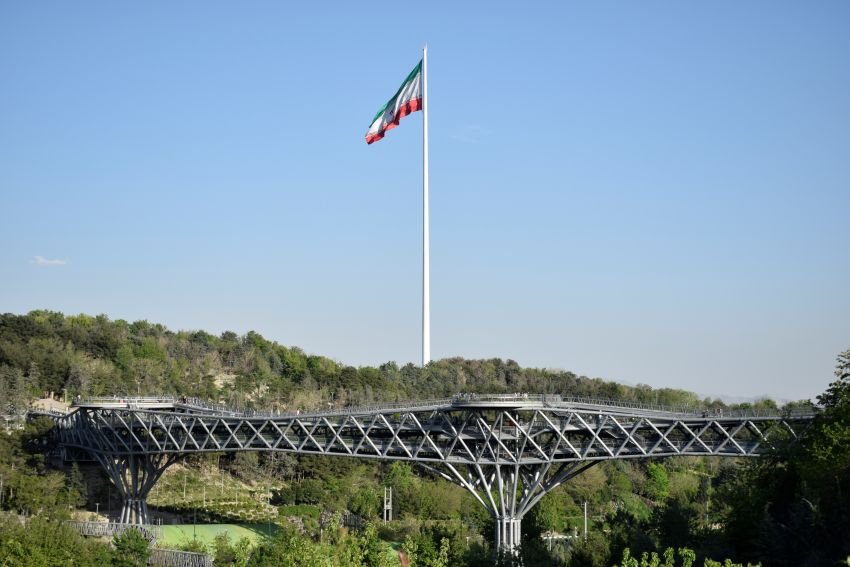
Friday, August 1, 2025
On Thursday, Tehran’s Martyrs of Power Memorial family rally honored the sacrifices of war veterans and martyrs from the 12-day conflict between Israel and Iran. The rally has become a symbol of remembrance and unity. It was organized with the strong support of the families of martyrs, veterans, and self-sacrificing veterans. This emotional gathering aimed to honor the memories of those who gave their lives and to promote cultural unity through family involvement and spiritual tourism in the city.
A Journey of Remembrance and Unity
The rally was supported by the Touring & Automobile Club of the Islamic Republic of Iran’s Committee for Martyrs and War Veterans’ Family Affairs, in collaboration with Tehran’s Foundation of Martyrs and Veterans Affairs. Over 160 participants took part in the rally, which included 48 cars and took the participants through key historical and spiritual locations in Tehran. The event highlighted the deeply rooted values of sacrifice and martyrdom within Iranian culture, with a focus on promoting familial bonds and social cohesion.
The family rally commenced at the Tomb of the Unknown Martyrs, located in the northeastern part of Tehran, an iconic site where many heroes are commemorated. This destination is symbolic, as it represents the nation’s collective remembrance of its fallen soldiers. From there, the rally headed towards Behesht-e Zahra Cemetery, located in the southern part of Tehran. This cemetery, which is a key cultural and spiritual landmark in Iran, is the final resting place of many martyrs who lost their lives during the Iranian Revolution and the subsequent wars.
A Focus on Spirituality Over Competition
Unlike typical rallies that emphasize speed and competition, the Martyrs of Power Memorial rally was structured as a spiritual journey. The event did not revolve around racing or time trials; instead, it was designed to foster a sense of spiritual and cultural reflection among its participants. The judging panel focused on several aspects of the rally, including adherence to traffic laws, safety principles, accuracy in routing, team discipline, and overall traffic discipline. This approach helped to ensure that the rally was a peaceful and respectful occasion, in line with the event’s overall purpose of promoting unity and cultural values.
Honoring Martyrs and Promoting Family Ties
The culmination of the rally took place at the Nodbeh Hall of Behesht-e Zahra Cemetery, where the best participants of the rally were recognized and celebrated for their commitment to the principles of the event. The closing ceremony, which included officials from the Touring & Automobile Club of Iran and the Foundation of Martyrs and Veterans Affairs, was a moment of reflection, where participants reaffirmed their respect for the martyrs and their commitment to upholding the values of the Islamic Revolution.
In a moving gesture, participants placed flowers at the tombs of martyrs who died during the imposed 12-day war, paying tribute to their sacrifices. This moment marked the emotional high point of the rally, as participants renewed their pledge to continue honoring the ideals of the martyrs and the cultural legacy of sacrifice. The event provided an opportunity for families to come together in a cultural and spiritual atmosphere, strengthening familial bonds and deepening their connection to Iran’s rich history and values.
Preserving Cultural Heritage and Fostering Unity
The Martyrs of Power Memorial rally was much more than a mere remembrance event; it was an embodiment of Iran’s commitment to preserving the memories of its fallen heroes and imparting the values of selflessness, sacrifice, and patriotism to future generations. Through this rally, the public’s empathy and social cohesion were strengthened, and the significance of honoring the martyrs’ contributions to the nation was underscored.
The event also served as a platform for highlighting the cultural and spiritual tourism opportunities within Iran, which continue to attract domestic and international visitors interested in understanding the country’s deep-rooted traditions and historical significance. By focusing on the importance of family participation, the rally reinforced the importance of intergenerational communication and cultural transmission, ensuring that the memories of the martyrs remain alive for generations to come.
Conclusion: A Step Toward Promoting Cultural and Spiritual Tourism
The Martyrs of Power Memorial family rally is an important part of cultural tourism in Tehran and beyond. It combines historical remembrance with family-focused activities. This not only honors the martyrs but also encourages social unity and spiritual reflection. As Iran develops its cultural tourism sector, events like this will help preserve the nation’s heritage and create a sense of belonging among its citizens. By emphasizing sacrifice, patriotism, and unity, the rally shows the resilience and strength of the Iranian people.
Spiritual Travel
Spiritual Journeys, Business Plans, And Family Strain

Pisces Horoscope: Pisces is symbolised by the fish, representing duality, fluidity, and deep emotional currents. Governed by Neptune, the planet of dreams and spirituality, Pisceans are often described as intuitive, empathetic, and imaginative beings with a profound connection to the unseen realms. Your horoscope offers a roadmap for navigating life’s ebbs and flows, providing valuable foresight into career, relationships, health, and personal growth. With its emphasis on intuition and sensitivity, the horoscope encourages individuals to embrace their inner wisdom, trust their instincts, and explore the depths of their emotions.
Pisces Daily Horoscope (August 2):
[Disclaimer: The content of this article is based solely on astrological predictions, and should be taken as general guidance. Individual experiences may vary. ABPLive.com does not assert the accuracy or validity of any claims or information presented. It is strongly recommended to consult a qualified expert before considering or implementing any information or belief discussed herein.]
-

 Brand Stories2 weeks ago
Brand Stories2 weeks agoBloom Hotels: A Modern Vision of Hospitality Redefining Travel
-

 Brand Stories7 days ago
Brand Stories7 days agoCheQin.ai sets a new standard for hotel booking with its AI capabilities: empowering travellers to bargain, choose the best, and book with clarity.
-

 Destinations & Things To Do2 weeks ago
Destinations & Things To Do2 weeks agoUntouched Destinations: Stunning Hidden Gems You Must Visit
-

 Destinations & Things To Do7 days ago
Destinations & Things To Do7 days agoThis Hidden Beach in India Glows at Night-But Only in One Secret Season
-

 AI in Travel2 weeks ago
AI in Travel2 weeks agoAI Travel Revolution: Must-Have Guide to the Best Experience
-

 Brand Stories4 weeks ago
Brand Stories4 weeks agoVoice AI Startup ElevenLabs Plans to Add Hubs Around the World
-

 Brand Stories3 weeks ago
Brand Stories3 weeks agoHow Elon Musk’s rogue Grok chatbot became a cautionary AI tale
-

 Asia Travel Pulse4 weeks ago
Asia Travel Pulse4 weeks agoLooking For Adventure In Asia? Here Are 7 Epic Destinations You Need To Experience At Least Once – Zee News
-

 AI in Travel4 weeks ago
AI in Travel4 weeks ago‘Will AI take my job?’ A trip to a Beijing fortune-telling bar to see what lies ahead | China
-

 Brand Stories4 weeks ago
Brand Stories4 weeks agoChatGPT — the last of the great romantics









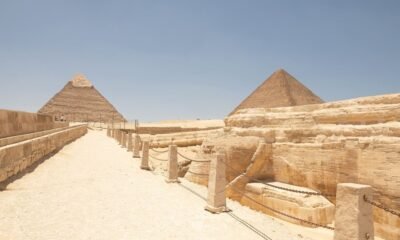

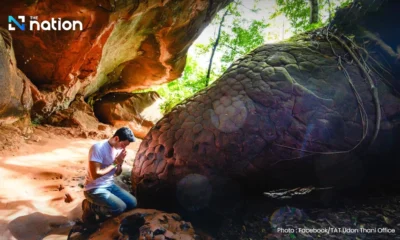

You must be logged in to post a comment Login